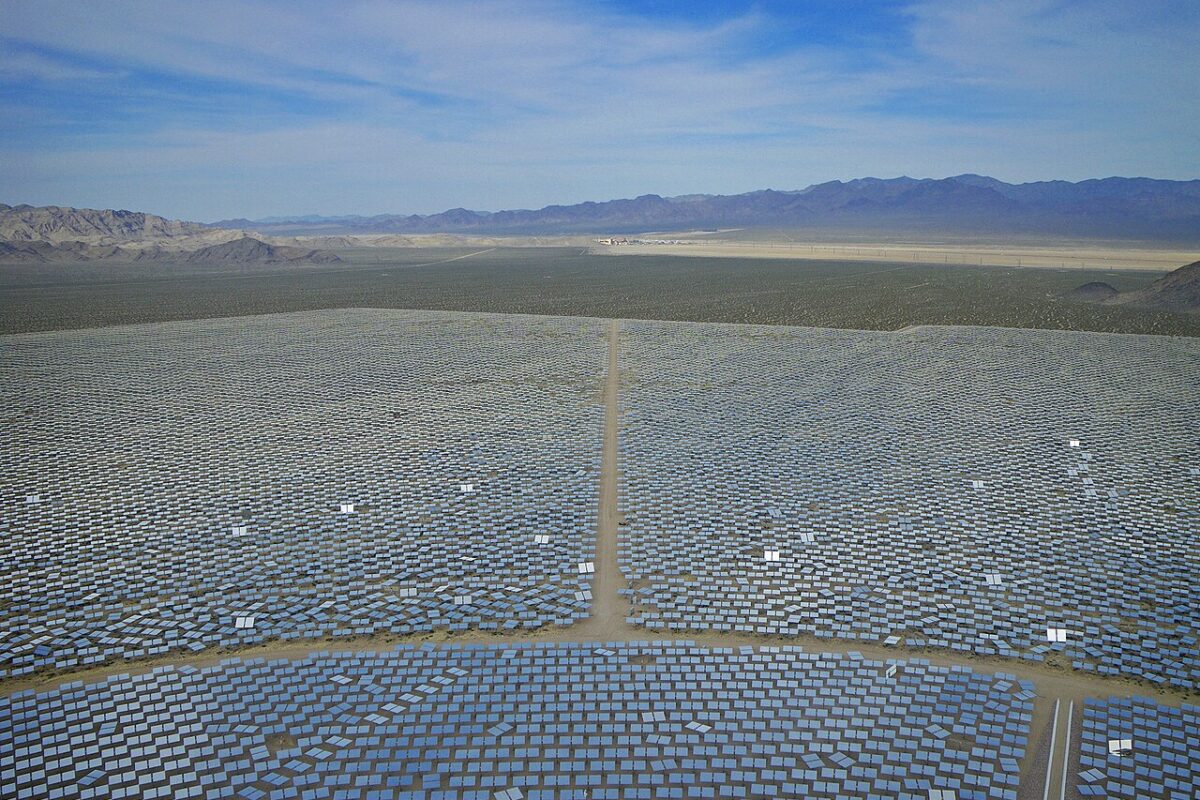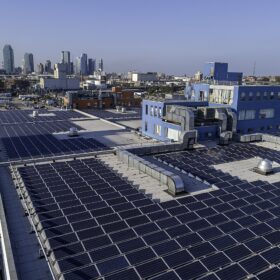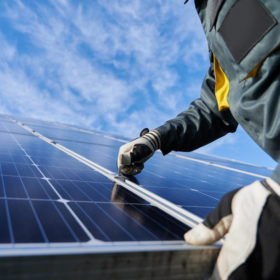Solar generation is forecast to meet roughly half of the growth in global electricity demand through to 2027, according to the International Energy Agency’s (IEA) Electricity 2025 report.
The agency’s flagship report predicts the world’s electricity consumption is set to rise at its fastest pace in recent years, growing at close to 4% annually through to 2027, driven by growing use for industry, air conditioning, electrification and data centers.
Solar is expected to meet half that demand due to continued cost reductions and policy support aiding its deployment, the report explains. The projection is up from the 40% of growth in global electricity demand that solar accounted for in 2024. Low-emission sources, combining both renewables and nuclear, are expected to meet all the global demand electricity growth through to 2027.
IEA’s report adds that global solar generation surpassed the 2,000 TWh mark in 2024. The figure is equivalent to 7% of global electricity generation, increasing on solar’s 5% share of total electricity generation in 2023.
The result means solar generation grew by 30% in 2024, its highest growth rate since 2017, totaling a record gain of 475 TWh year-on-year. IEA says more than half of the growth in solar generation came from China.
In 2024, electricity generation from solar surpassed that from coal in the European Union, with its share in the generation mix exceeding 10%. In the coming three years, IEA is forecasting solar generation will surpass the 10% benchmark in China, USA and India.
Over the 2025-2027 period forecasted in the report, global solar generation is expected to increase by around 1,800 TWh, IEA says. This growth would place it as the second largest low-emissions source of electricity in the world by 2027, after hydropower.
Meanwhile, renewables are forecast to collectively surpass coal-fired generation this year, with coal’s share of global electricity generation set to fall below a third for the first time in the last 100 years.
The report adds that as the share of renewable energy sources in the electricity mix rises, understanding periods with reduced solar PV generation due to weather conditions becomes important. “While such events can potentially strain the power system, having enough dispatchable capacity and long-duration storage will be essential,” the report suggests.
Examples of major strains faced on electricity systems in 2024 are also detailed in the report. IEA says these events, such as winter storms, hurricanes, blackouts and droughts, highlight the importance of ensuring greater resilience of electricity systems.
In other regions, the rising volatility in wholesale electricity prices has caused incidences of negative wholesale electricity prices. IEA says these occurrences broadly signal insufficient flexibility in the system due to technical, regulatory or contractual reasons and indicate a growing need for system flexibility.
This content is protected by copyright and may not be reused. If you want to cooperate with us and would like to reuse some of our content, please contact: editors@pv-magazine.com.








By submitting this form you agree to pv magazine using your data for the purposes of publishing your comment.
Your personal data will only be disclosed or otherwise transmitted to third parties for the purposes of spam filtering or if this is necessary for technical maintenance of the website. Any other transfer to third parties will not take place unless this is justified on the basis of applicable data protection regulations or if pv magazine is legally obliged to do so.
You may revoke this consent at any time with effect for the future, in which case your personal data will be deleted immediately. Otherwise, your data will be deleted if pv magazine has processed your request or the purpose of data storage is fulfilled.
Further information on data privacy can be found in our Data Protection Policy.